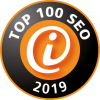Should one focus on holistic content?
Recently, the SEO community has been focusing on so-called holistic content, which has been the subject of intense discussion. Instead of creating separate keyword sites for each individual keyword of a specific topic, it is better to create only one longer page that combines all the information related to the respective search queries. But what is the better choice? Should one opt for holistic content in the future or stick to the well-known principle?
Reasons for holistic content:
Google’s algorithm and functionality are constantly changing. With time, Google’s algorithm is becoming “smarter.” It now recognizes better which search queries have the same goal and can offer similar results for similar search queries related to a particular topic. Therefore, it makes sense to create only one page with high-quality content for the different variations of search queries.
Another point is that Google can now rank and rate high-quality content better than it could in the past. With improved spam detection, poor content is filtered out and good content is “rewarded.” Therefore, it now makes more sense to comprehensively cover and address a topic than it did before.
The limits of holistic content:
Holistic content usually requires a longer text because it covers a topic comprehensively. However, this should be done within certain limits and not compromise the quality of the content. The texts should be created to fit the customer and be tailored to the target audience. It makes no sense, for example, for a pet store to write about dogs and end up discussing Darwin’s theory of evolution.
It is also important to know that not every similar-sounding search query produces the same results and should not produce the same results. For example, the search queries “vacation with kids” and “vacation with dogs” related to the topic of vacation produce completely different results because they are not directly related.
Certain limits are also set by the page’s source code itself. Only one title tag and one meta tag can be created for each URL. If it is too general, it may be lost among the many more specific pages and lose potential relevance to the user. The user only knows the content of the page after they see the description and title displayed by Google in the search results, no matter how good the content is.
A good solution to this problem would be to create a single page for the main topic (in our example: “vacation”) and then redirect the user to other sub-pages for the “vacation with kids” or “vacation with dogs” topics.
However, certain topics can also negatively impact holistic content on their own. Some topics or search queries do not require long and general text but short and concise answers. Google itself offers these in the form of so-called “featured snippets.” The text embedded in the snippet is displayed as a definition for the corresponding and relevant search query on Google. The user does not have to click through pages. If this is the case for a topic and a trend towards this appears in the search results, it may make little sense to create holistic content for the relevant search query/topic.
A general recommendation for anyone creating longer texts is to use a table of contents and subheadings. This not only benefits the website’s user-friendliness but is also considered an indicator of good content from a search engine perspective.
When should one focus on holistic content?
Holistic content should generally be considered to cover several different terms/keywords related to a topic on a single page. One page is sufficient for words such as “soccer shoes” and “football shoes.” The same is true for filler words (“shoes for soccer”/”soccer shoes”), synonyms (“soccer game” and “football match”), and keywords with very low search volumes (“C-junior soccer coach”).
Ultimately, it depends on the demand for a specific topic.












